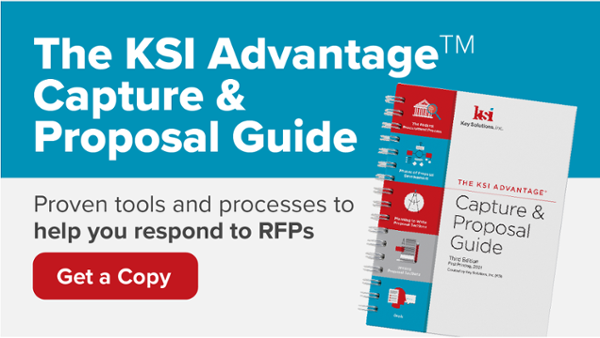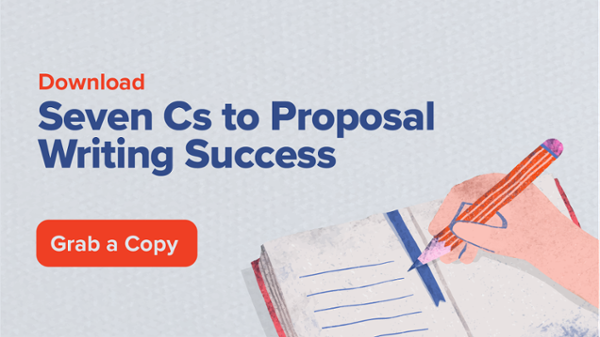It is becoming common knowledge that proposals are scored, not read. But as a writer, you may be compelled to tell the story in your proposal narrative.
You may even get internal reviewers who lament over the fact that your proposal just isn’t telling the story well.
So my advice focuses on how to write a proposal so that your narrative scores well, applying what I call the Seven Cs:
- Compliant
- Customer Focused
- Compelling
- Credible
- Concise
- Clear
- Consistent
The Seven Cs of Proposal Writing:
1. Compliant
First and foremost, your response must be compliant.
Structure your response to the Proposal Instructions (typically Section L) and the Evaluation Criteria (typically Section M). Next map to other requirements, as required. For example, in technical sections, it may be necessary to map to certain Statement of Work (SOW) areas (typically Section C).
To facilitate evaluation, consider including relevant RFP references in your section heading titles. Additionally, evaluators often do key word searches to find what’s important to them. Make sure all sections include key words from the instructions, evaluation criteria, and the SOW.
2. Customer-Focused
Proposals should be about how the customer’s needs are met by your solution, not about how wonderful your company is and why the customer should choose you.
To determine whether your writing is more company-focused or customer focused, try this quick test. Hit Ctrl-F and search for the number of times you mention your company and/or team name. Then search for the number of times you mention the customer’s name. You should aim to mention the customer’s name more time than yours. If you don’t, go back and revise your text to focus more on the customer and the benefits they will receive by choosing your solution.
3. Compelling
Substantiate all claims with proof points and metrics, quantified if possible
Also, avoid clichés that will make inevitably make the evaluators roll their eyes (for example world class, best-of breed, silver bullet).
4. Credible
Many factors impact whether your proposal will be perceived as credible.
A narrative that is full of typos and grammatical errors will be perceived as less credible. Additionally, avoid weak words, such as the following attempt: believe, feel, intend, strive, think.
5. Concise
Don’t use ten words to say what can be said with three.
Avoid unnecessary adjectives and remove redundancies: actual experience (experience), advanced planning (planning), close proximity (proximity), consensus of opinion (consensus). In a similar vein, avoid fluffy language that has no real meaning or impact to the evaluation (for example, “Our world-class technical solution leverages a best-of-breed suite of tools.” Concise writing makes your response clearer and easier to evaluate.
6. Clear
Use present tense and active voice to make your writing more active and believable
For example, instead of “The work will be delivered on schedule,” say “Company A delivers the work on schedule.” Additionally, avoid overusing jargon and technical language. Overusing jargon can make it harder for non-technical evaluators to understand what you’re trying to say.
7. Consistent
Check your response for consistency.
Verify that you reference terminology and key metrics consistently across your response, including: the customer, contract names, key proof points, tools, processes, etc. Consistency will also support the credibility of your response.
CONCLUSION:
I have found these Seven Cs to be an effective tool in guiding my proposal teams to develop winning proposal responses. Though not meant to be a catch-all by any means, the Seven Cs serve as a useful checklist to make sure the proposal narrative is on the right track.
What are some of the writing tips you follow or give to your writing teams?
This article was originally published by Ashley Kayes on Proposal Reflections.









